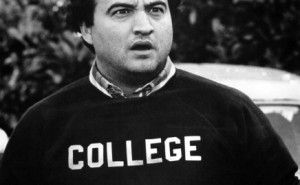Calif. universities could expand without tax increases
by CalWatchdog Staff | July 29, 2012 9:31 pm
 [1]July 30, 2012
[1]July 30, 2012
By Michael Poliakoff and Andrew Gillen
From coast to coast, discontent rocks the great flagship universities. State funding is declining and institutions are responding with ever rising tuitions. But the response is far from inevitable. Remedies are already in hand, but for the will to take them.
California’s public universities are holding out for a tax increase, which, if approved, would spare them a further quarter-billion dollar funding cut, threatening even greater tuition increases should the ballot initiative fail. Meanwhile, University of Virginia faculty and alumni are pushing back as the governing board raises concerns about whether the university president is controlling costs.
Strangely absent is any discussion of the basic mathematics of college finance. We spend more than twice the average of any industrialized nation, but are trailing in terms of results.
University of California President Mark Yudof blames state disinvestment in higher education for tuition increases and claimed in the Wall Street Journal that UC has “laser focus on efficiencies.” But the inconvenient truth is that higher education in the United States is not underfunded. Rather, it uses its ample resources badly.
One crucial — and neglected — solution involves greater teaching loads and efficient use of classroom space.
In 1988, the average professor at major research universities taught 2.9 classes each term. By 2004, that number fell to 1.8. Surely, the teaching capabilities of California’s distinguished professorate didn’t decrease in that short time. Consider the impact of a small change in the beleaguered University of California system, with more than 8,700 tenure or tenure-track faculty. If the 10 campuses of the UC system increased the average teaching load of the faculty by just 10 percent, it would be the equivalent, cost-free, of another 870 full-time faculty at work in the classroom, generating substantial additional tuition revenue.
Is this an unreasonable expectation? In 2003, the University of Maryland System, under budgetary pressure, took this proactive course. It worked.
Capacity
But what about capacity; would there be space for all these new students? Here is another unpleasant truth about higher education. It loves to build buildings — digital age be damned. What it doesn’t do very well is use those classrooms and labs, especially not on Friday afternoons or during the summer.
The California Legislative Analyst’s Office observed[2] that the University of California’s summer enrollments were only 23 percent of their fall enrollments. Flagship institutions, moreover, have been notoriously slow to embrace online instruction, with its vast potential for high-quality, lower-cost delivery, despite the huge investments they make in technology. The University of California’s degree-granting online offerings number only a few dozen.
The conclusions are unavoidable. There is space and there is expert, human capital to educate the students of this nation — without an infusion of dollars drawn from new taxes or increased tuition. We need university governing boards willing to demand that the institutions for which they have fiduciary responsibility put students first, in reality, not just rhetoric. They must change the reward system to recognize that dedicated, effective teaching is as important as published research. A modest increase in faculty productivity in the classroom will not unduly harm higher education research: rather, it will cause institutions to be more discerning about how they invest dollars in faculty research projects.
College leadership regularly claims that America has the finest higher education system in the world. That boast will no longer hold water if we don’t have dramatic changes, and soon.
Andrew Gillen, Ph.D. is Senior Researcher at the American Council of Trustees and Alumni
Michael Poliakoff, Ph.D. is Vice President of Policy at the American Council of Trustees and Alumni
- [Image]: http://www.calwatchdog.com/2012/03/26/cal-state-presidents-receive-perks-and-benefits-worth-50-of-base-pay/john-belushi-college-436x270-2/
- California Legislative Analyst’s Office observed: http://www.lao.ca.gov/sections/higher_ed/FAQs/Higher_Education_Issue_11.pdf
Source URL: https://calwatchdog.com/2012/07/29/calif-universities-could-expand-without-tax-increases/